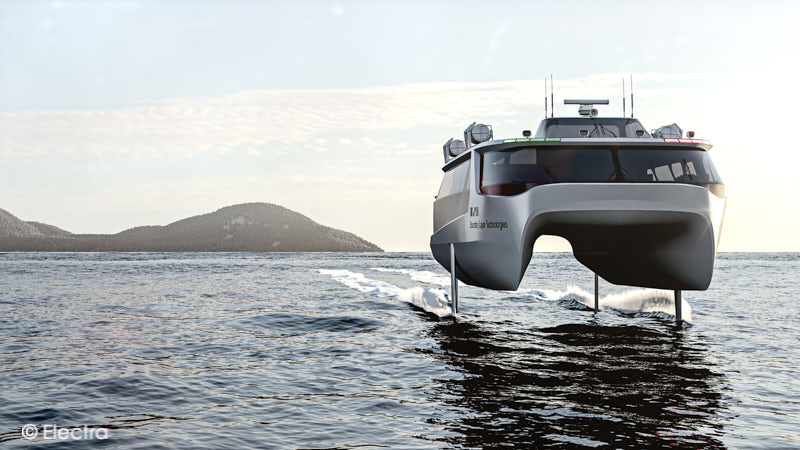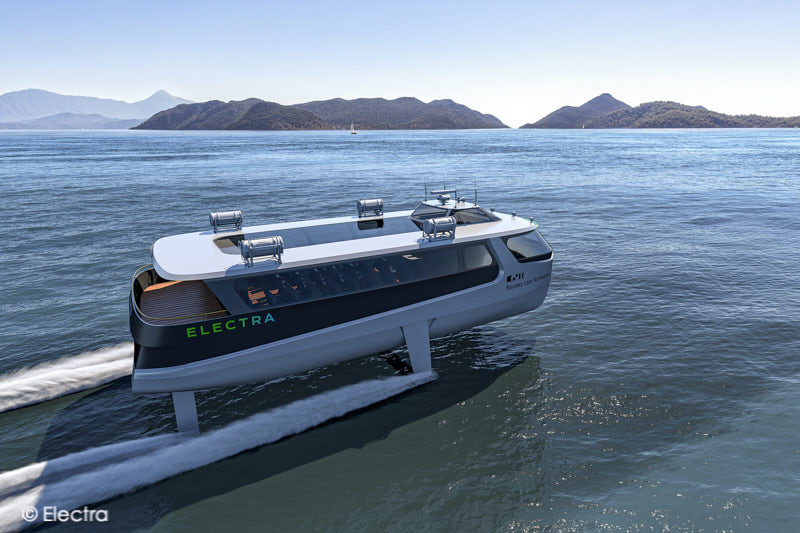After 14 months of layup at the Perama Repair Zone, the Italian-built EXPRESS PEGASUS of Hellenic Seaways is probably being prepared to go. The ship is out of service since August 2020. Her branding has already been removed.
SUPERSTAR (former SUPERFERRY II) is getting prepared for her fourth career in Greece, this time with SeaJets. The ship is already sporting her new livery. It is expected 100 extra beds will be added in order to offer night service in South or North Aegean routes.
The ports of Stockholm, Helsinki and Tallinn have invested simultaneously in onshore power with the same standards.
All of the ferries operating on Stockholm – Helsinki and Stockholm – Tallinn, already connect to shore power. Now the final part of the puzzle is in place to make it possible for the ferries operating on the Helsinki – Tallinn route to connect to shore power.
Due to increasing demand on the UK, CLdN Ro-Ro will be introducing a 7th sailing on the Zeebrugge –Killingholme service.
As from week 45 the service will run daily (Mon-Sun), offering an overnight connection between the port of Zeebrugge and Killingholme.
Since Brexit , CLdN experiences a growing and ongoing demand for unaccompanied transport between the UK and the Continent.
The modal shift towards unaccompanied transports underlines the need for more efficient transport in view of an ongoing lack of truck-drivers in the Uk and on the continent.
CLdN writes on LinkedIn that it is a top performer for CO2 emissions per tonne of freight carried. This statement is based on public MRV data for pure freight ro-ro vessels, as published on EMSA/Thetis-MRV.
CLdN RoRo says that, with a weighted average emission for its fleet of 36 g CO2/tonne-km ( or 67 g CO2/tonne-nm) in 2020, CLdN RoRo emitted 17% less greenhouse gas per tonne of cargo carried than their second best competitor.
Typical emissions of other modes of freight transport:
Plane: 1036 g CO2/tonne-km
Truck: 137 g CO2/tonne-km
Train: 24 g CO2/tonne-km
CLdN RoRo vessel HERMINE: 21g CO2/tonne-km.
This means HERMINE emits less carbon than a train, concludes CLdN RoRo.
CLdN’s ambition is to further reduce its carbon footprint and to maintain its position as greenest ro-ro operator by:
- Slow steaming
- Innovative propulsion
- Operational efficiency
CLdN asked PwC to run an independent check and the report can now be downloaded via below link (click on page to go to https://www.cldnroro.com/downloads and then go to “Cases”).
Boundary Layer Technologies, a California based marine technology startup launched their fully electric hydrofoil ferry concept design on 27 October 2021.
ELECTRA – twice the speed and range of existing electric ferries – has a range of up to 100 nautical miles and cruise speed of 40 knots due to Boundary Layer Technology’s proprietary hydrofoil technology and podded propulsion system.
Compared to fossil fuel alternatives, ELECTRA’s battery electric propulsion significantly reduces cabin noise by up to 20dB compared to conventional ferries.
The ELECTRA ferry offers OPEX reductions of up to 35% compared to fossil fuel burning fast ferry alternatives, as well as helps operators de-risk the future cost uncertainties of carbon taxes and emissions trading schemes being implemented globally.
ELECTRA was specifically designed with the Greek ferry market in mind.
“The ELECTRA ferry offers great appeal to many ferry operators in the Aegean and Mediterranean regions, who are currently evaluating their next generation highspeed craft fleet and want to comply to strict future emission regulations, reducing their environmental footprint asap” explains Pythagoras Nagos, former Chief Commercial officer of Hellenic Seaways, industry expert and a member of the ELECTRA advisory board.
The project has also gained traction with investors who are increasingly looking to fund green projects. “This would be a fantastic win for sustainable maritime transport and the blue economy. ELECTRA is the ideal zero emission catamaran to replace the aging fleet of Greek coastline hydrofoils and short haul ferries” says Spyros Poulios, Managing Partner at Athens-based impact investment fund Brace. “There is a real opportunity to form a coalition between our forward-thinking government, corporates, and global innovators to make industry-decarbonising projects like this a reality.”









